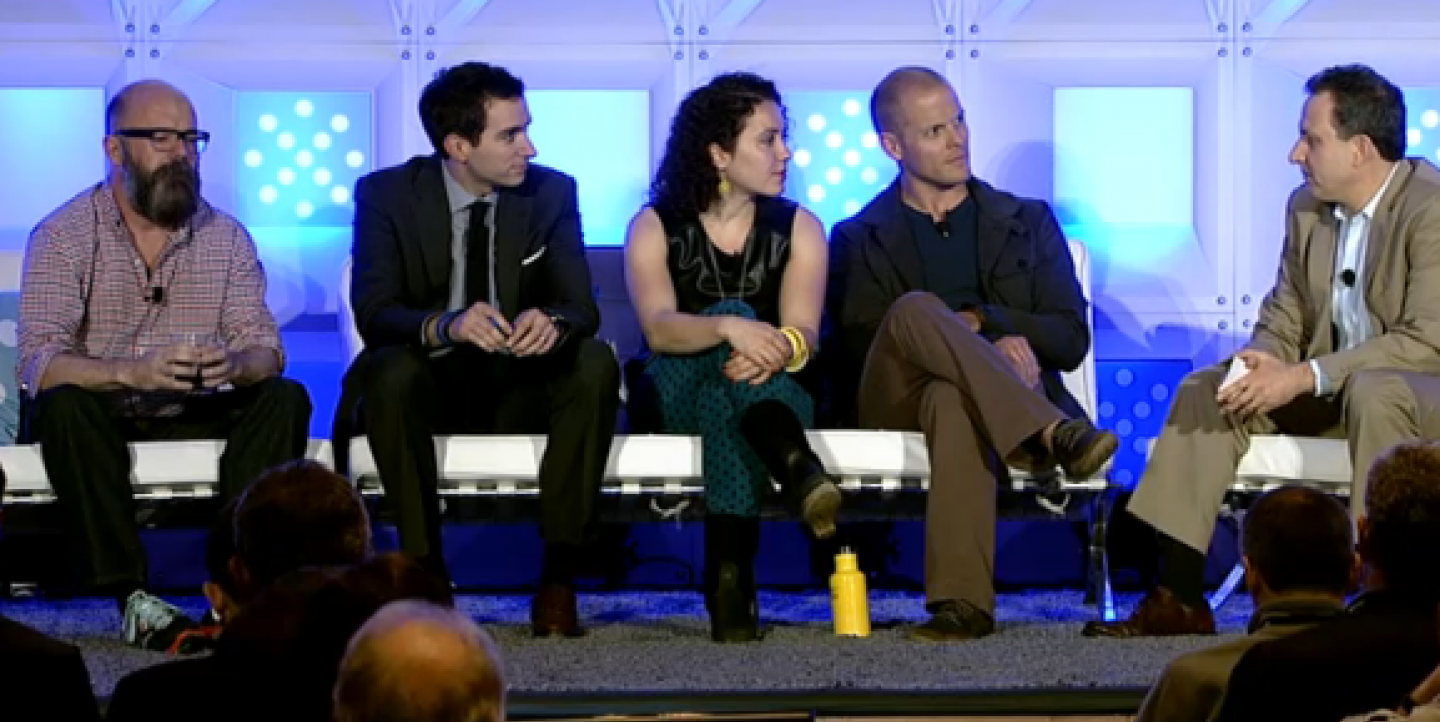Once a blogger reaches a certain level of Internet fame, the question inevitably arises: Should I start doing this for a living, and if so, how?
A panel of elite bloggers--Andrew Sullivan, Maria Popova, Andrew Ross Sorkin and Tim Ferriss--discussed monetization, advertising and going it alone at the paidContent Live 2013 conference, live-streamed here.
In February, Andrew Sullivan moved his popular blog The Dish from the Daily Beast to an independent, freemium meter model site. Anyone can read a limited amount of blog posts, but subscribers pay $19.99 per year to get full access to his take on politics in a sponsored-content free, ad-free space.
Without a well-known partner and with a new publishing model, Sullivan admitted that “Once you’ve gotten past the big surge of total Dish-heads, getting other people to cough up online is new and difficult." Still, he’s had some pleasant surprises. “We expected a real trade-off in traffic, pageviews. We haven’t [seen that].” In a recent month, 800,000 people without subscriptions viewed the site's free content.
Though the site earns money from his 25,000 subscribers, he said he doesn't shun traditional advertising like banner ads, but he's skeptical if dealing with ad companies is “worth the trouble and the expense” when there are loyal readers willing to pay. And native advertising? He won't touch it. “Advertising is a totally legitimate, ethical way of funding journalism. Native advertising is an absolute betrayal of the core principles of journalism.”
Maria Popova of Brain Pickings agrees that when it comes to advertising models, “it’s a difference of intention.” Popova received a lot of flak from Reuters columnist Felix Salmon about using Amazon affiliate links in her posts without a disclaimer. But she doesn't have a vested interest in whether people buy these books or not; it's when ads rely on click-throughs to make money that could pose an ethical dilemma, she believes.
Andrew Ross Sorkin has seen more than a decade of success with DealBook, a niche blog within the New York Times created in 2001. Sorkin said he’s thought about going independent, but ultimately the blog benefits from its affiliation with a highly regarded news organization.
“The New York Times as a platform allowed us to scale much quicker than we ever could in any other way,” he said. He’s been able to hire big names in journalism, and by keeping the blog attached to a larger entity, it’s more likely to be sustainable if he leaves someday, Sorkin said.
But he’s seen the drawbacks from working within a large institution: it’s occasionally more bureaucratic, as well as harder to innovate and to make investments in the business.
Tim Ferriss, author and creator of lifestyle blog 4-Hour Workweek, uses a mixed business model with two extremes: "I have free and I have extremely high priced." His blog is completely free of charge, but he hosts events that can run up to $10,000 a ticket.
Sullivan isn't experimenting with his independent project to figure out how to get paid (he's currently not even taking salary), but he's doing it because he loves it. “To figure out the business side is more about figuring out a way to save journalism online from its predators, which are currently digesting it,” he said.
Popova also attested to writing her blog not as a business, but for an "audience of one." Her "human-powered discovery engine for interestingness" runs on a donation model, but she said financial merit isn't a factor for donors. Instead, readers donate "because they see a shared sensibility in what I stand for in the world and what they stand for."
IJNet Editorial Assistant Margaret Looney writes about the latest media trends, reporting tools and journalism resources.
Image: screen-grab from live stream of paidContent Live 2013 conference.

